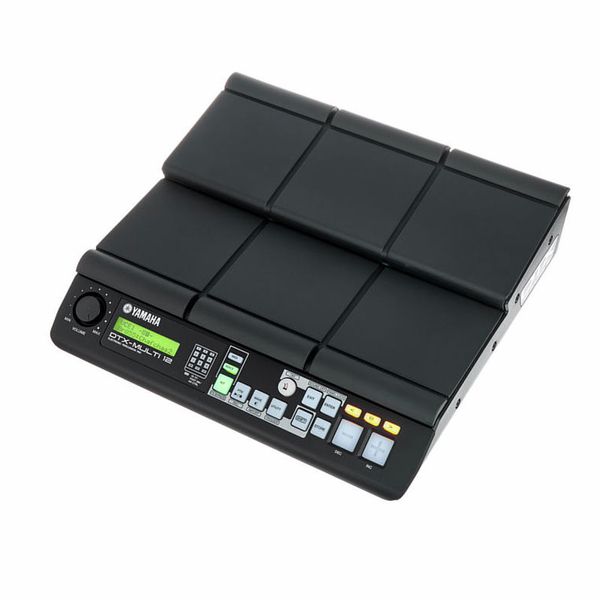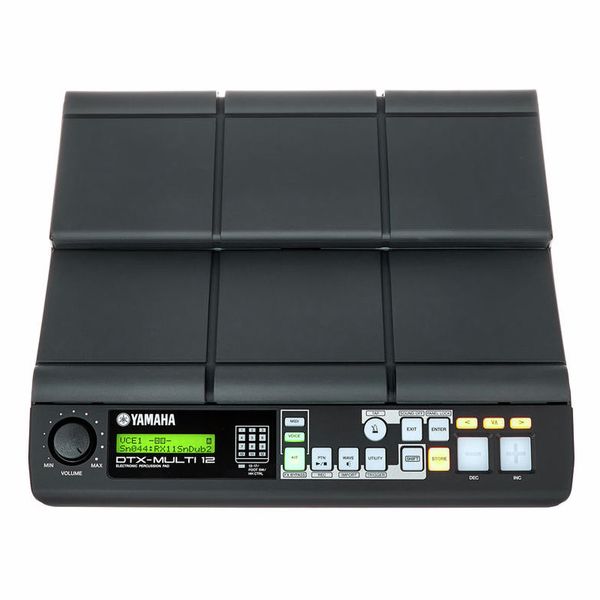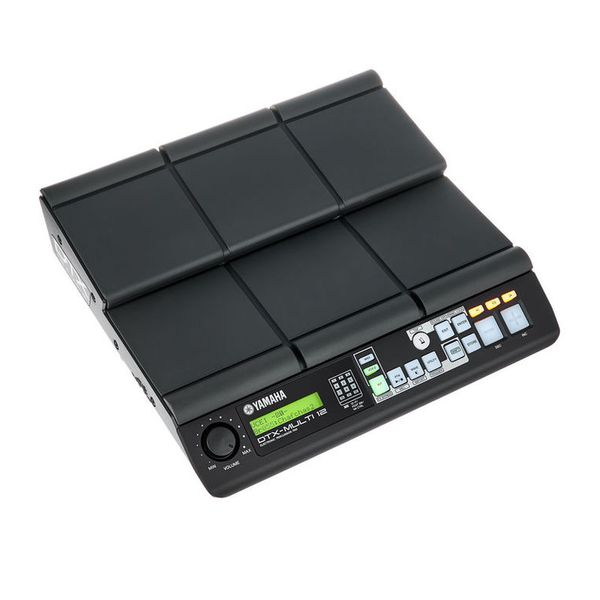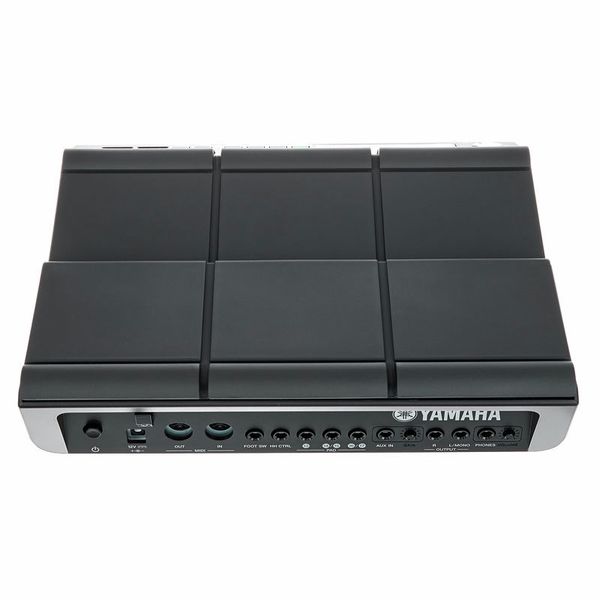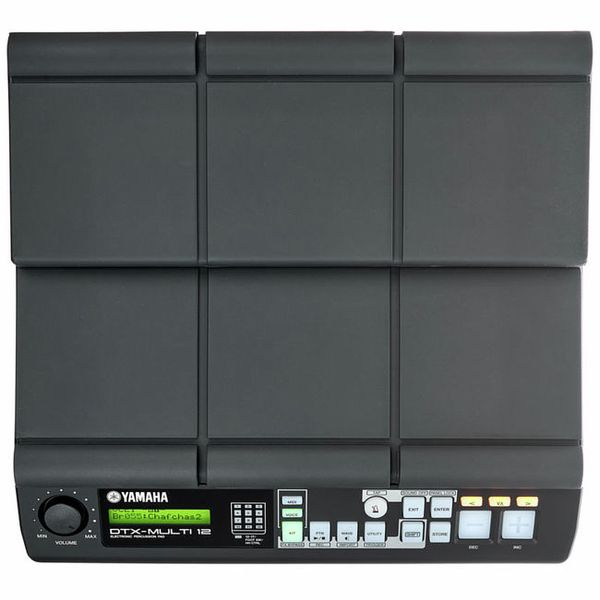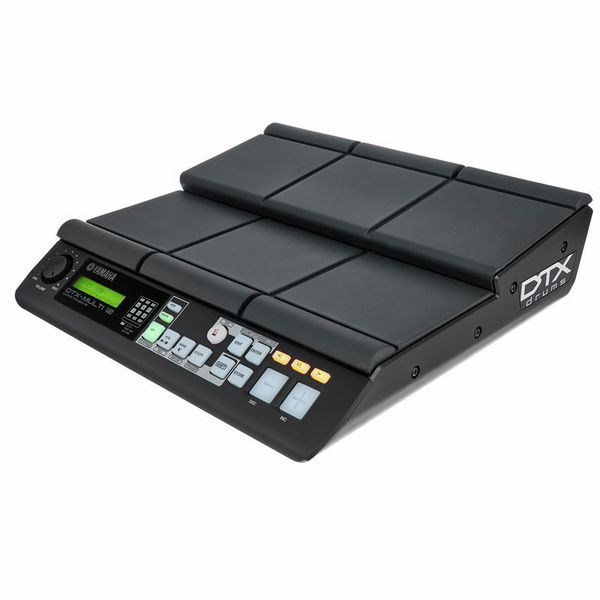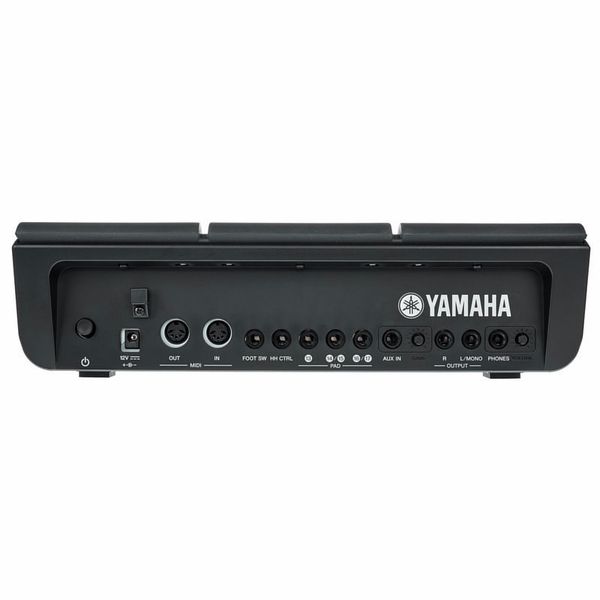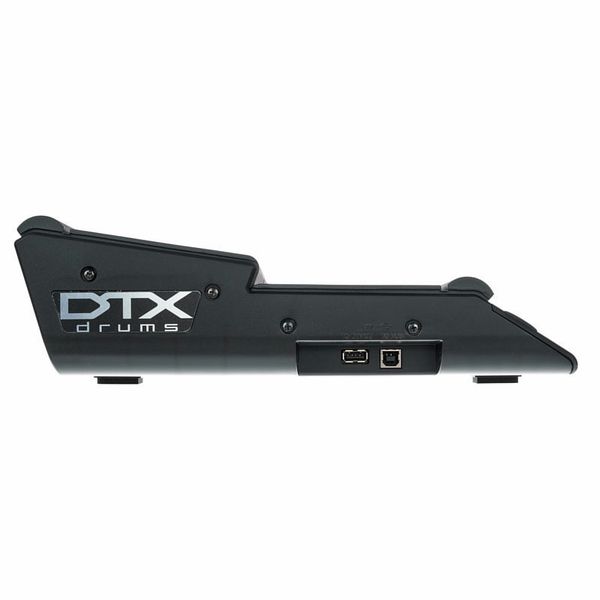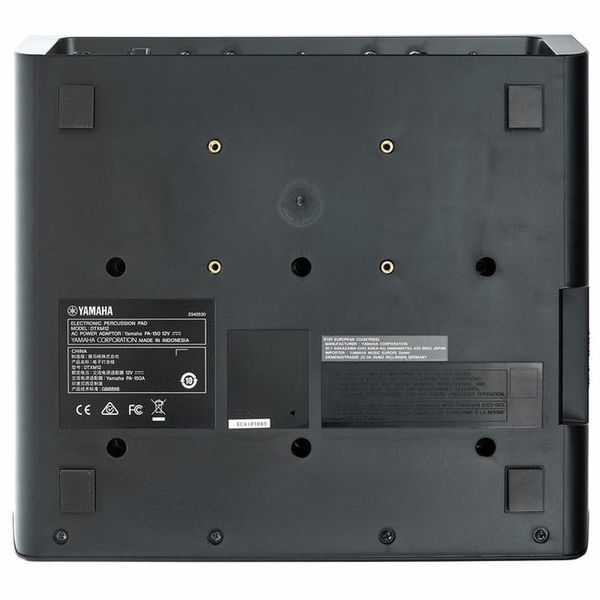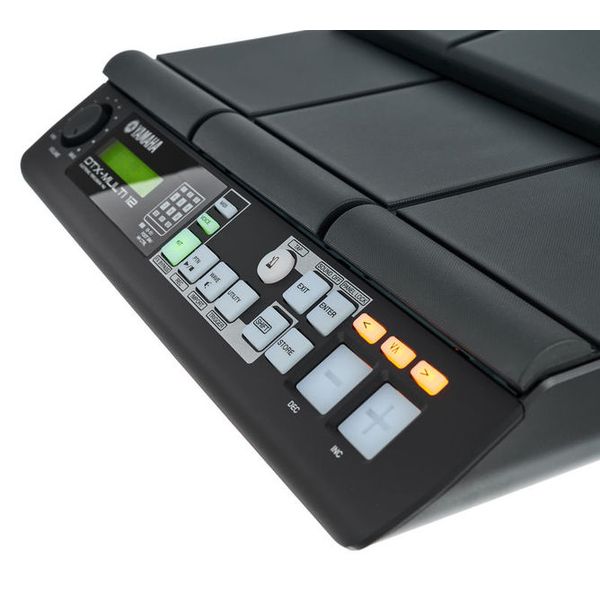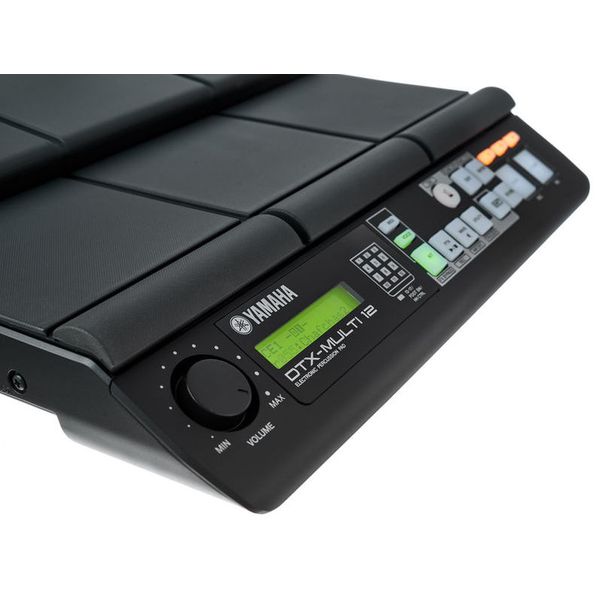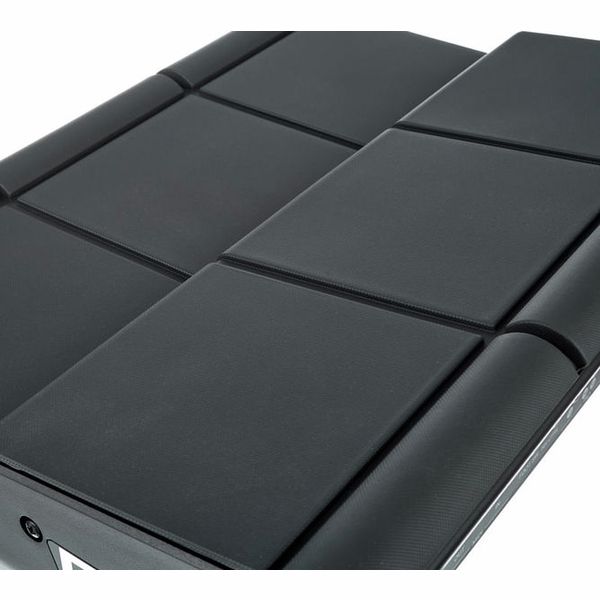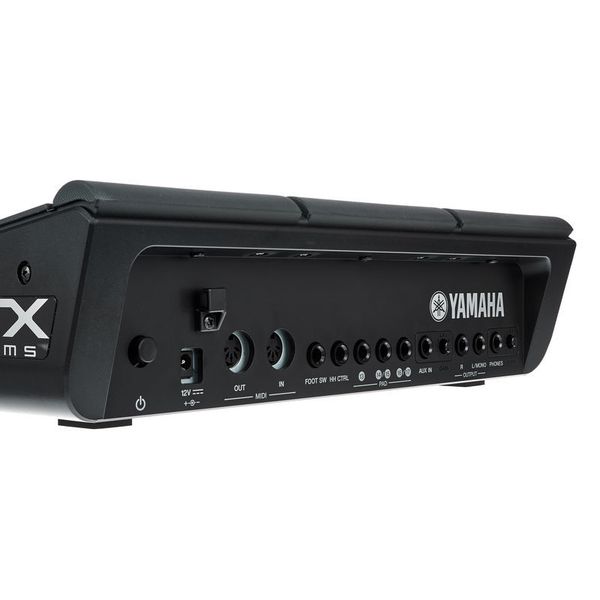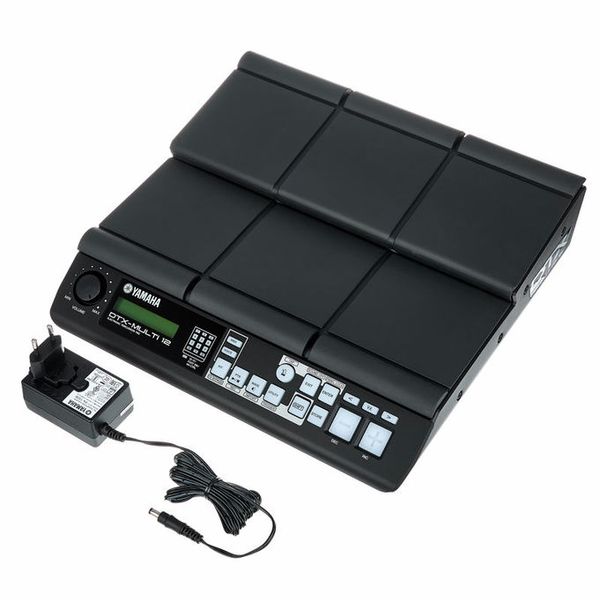I’ve used the drumpad both as an addition to my acoustic drum kit as well as a stand alone percussion kit. The last four years, it has proven to be an incredible asset.
The biggest selling point to me was the amount of pads (12 in total) and the ability to play with the hands. The twelve pads give plenty of room to map an entire drumkit (including two different crashes, a separate ride bell, rim click and a cowbell) or scales of melodical notes (i.e. marimba, piano, vibraphone …) to play melodies.
The pads are responsive and musically expressive, albeit the border pads need a little more force than the middle pads to trigger. With some tweaking of the settings, I was able to get the trigger response just right for me. I use the hand playing mode not only for hand playing, but also for stick playing. That gives me a nice dynamic control and the ability to play ghost notes and rolls (note: I am not a hard hitting drummer). The pads are soft rubber: perfect for the hands, a bit getting used to for sticks (but to me not a deal breaker).
The built in sounds are fine and are tweakable (pitch/attack/reverb/distortion …). There is a large selection of (exotic) percussive sounds, which is nice to have. There are also general MIDI sounds (piano, bass, trumpet …). I find those especially useful in combination with a MIDI keyboard (with 5-pin MIDI connection). When you connect the keyboard with the pad via MIDI in, you can play those sounds of the pad via the keyboard. I have gotten lots of mileage out of a layered glockenspiel-vibraphone sound, the timpani and the tubular bells. As the drum sounds are a bit few, I imported recorded samples of my own drumkit. 64 MB storage is very little in today’s standards, but when you use that room efficiently (no long samples) you can fit quite a lot in it.
A downside of the pad is the navigation system. Prepare to push buttons … a lot. There is only a small screen for a labyrinth of functions and menus. However, when you take your time to discover all those menus, you will discover the power and versatility of the device. There is an iPad app to help with some of it. The app is handy for quick testing and assigning of sounds, adjusting velocity curves, tweaking effect parameters such as attack, reverb, chorus, distortions etc. (the last two I would not recommend trying on the device itself). For other actions, such as working with imported wav. files and patterns, you will want to work on the device itself. The app does not adopt de name of the wav. or pattern files you assigned on the device, instead just referring to them as ‘wav 1’ or ‘pattern 6’, which makes keeping track of the sounds or patterns you want to assign very difficult. Also, if you want to record your own patterns, you will not be able to do that via the app. I personally went through the learning curve of navigating on the device itself and honestly, I get most things done faster that way than via the app.
Build quality is solid, except for the physical turning knobs. The main volume knob sometimes causes a friction sound when turning while the device is playing a sound. Sometimes I hear only through one in-ear and I only get stereo sound when I jiggle the headphone volume knob a little bit.
Despite the few shortcomings, this is a very powerful device, if you take in account that it takes some time and maybe frustration to get to know the full potential. One last tip: be sure to explore the layering and mute switch options: they wil open a world of possibilities.


